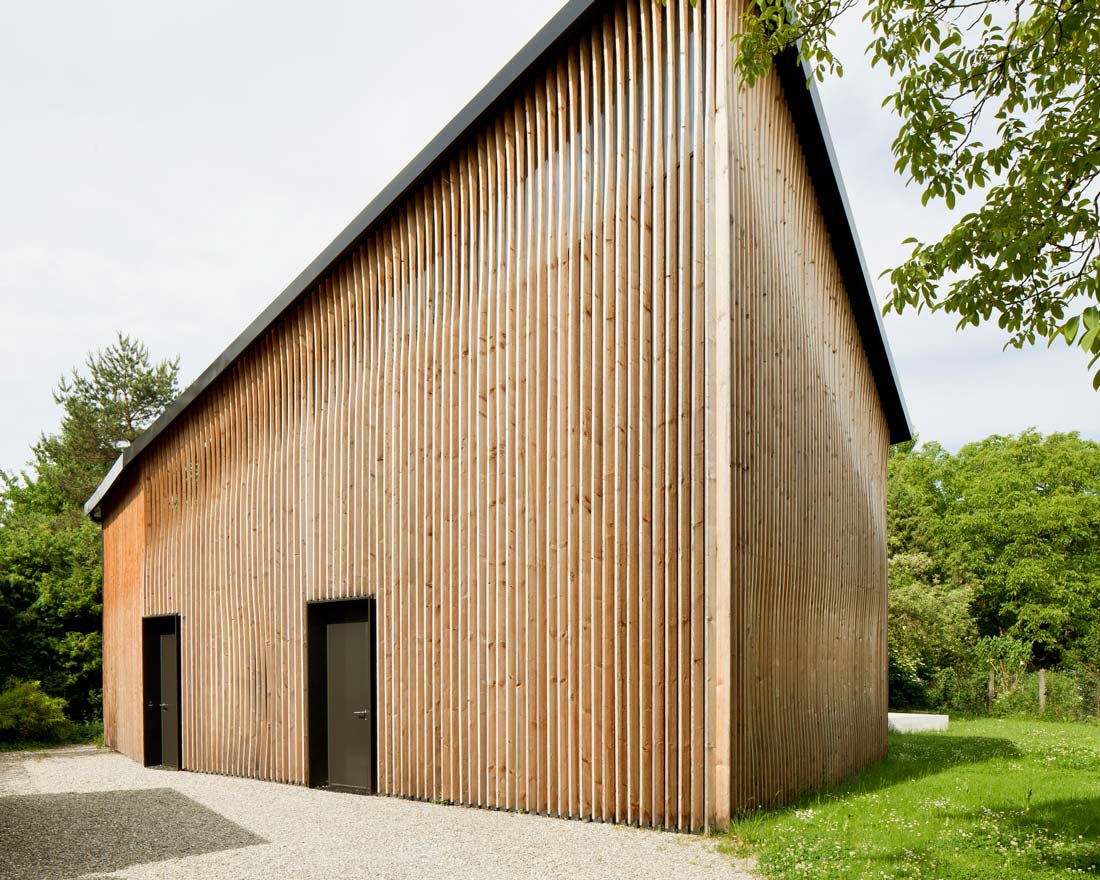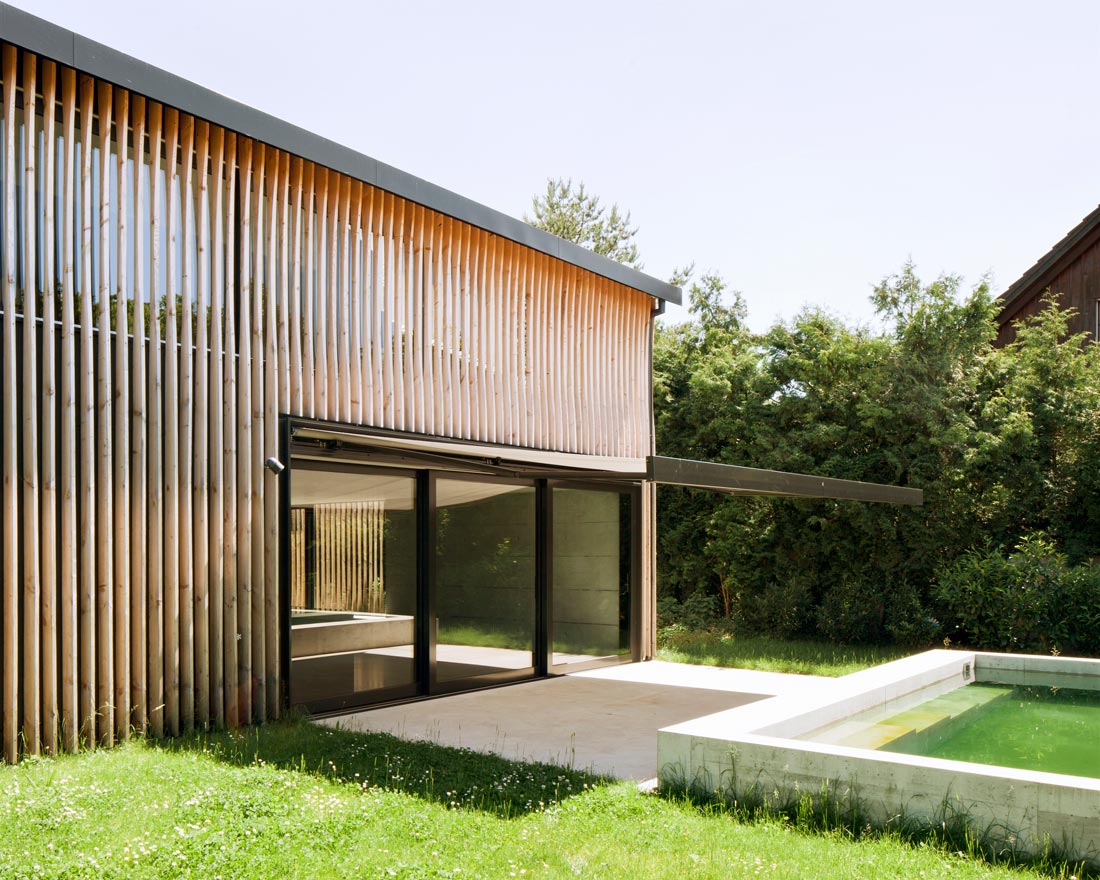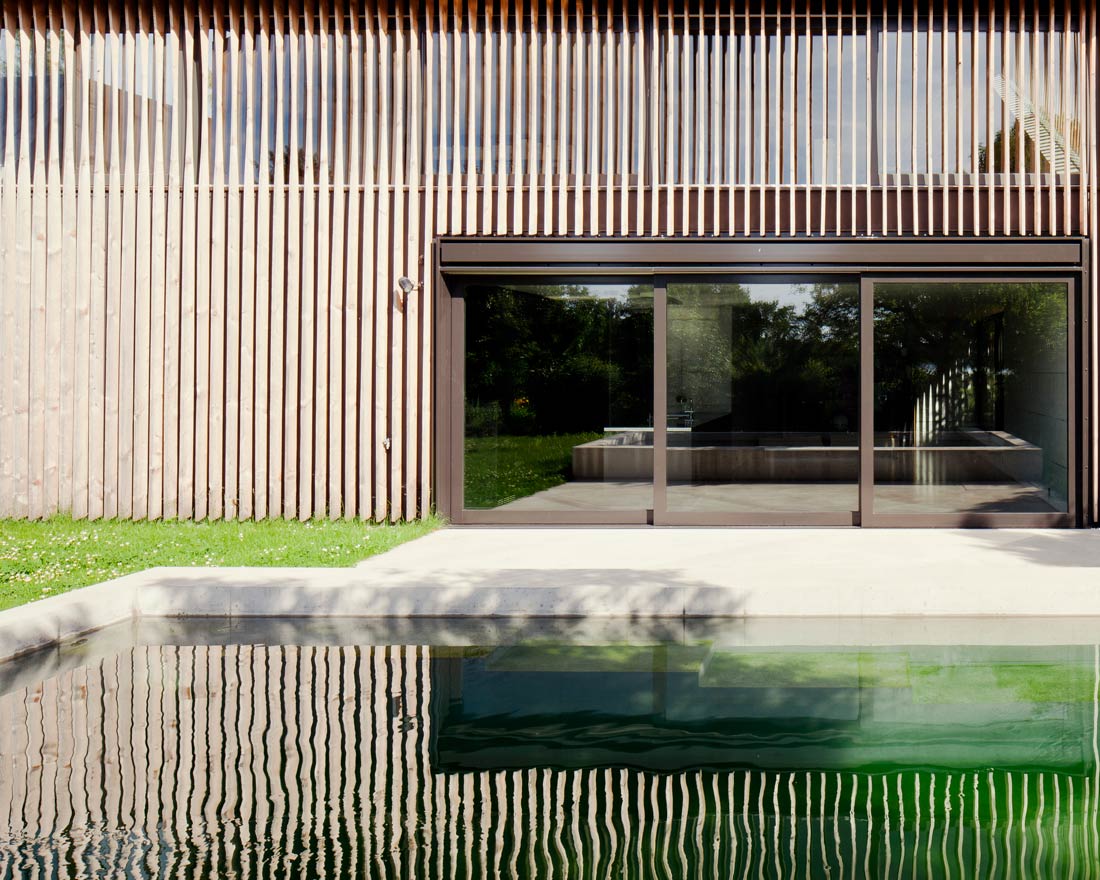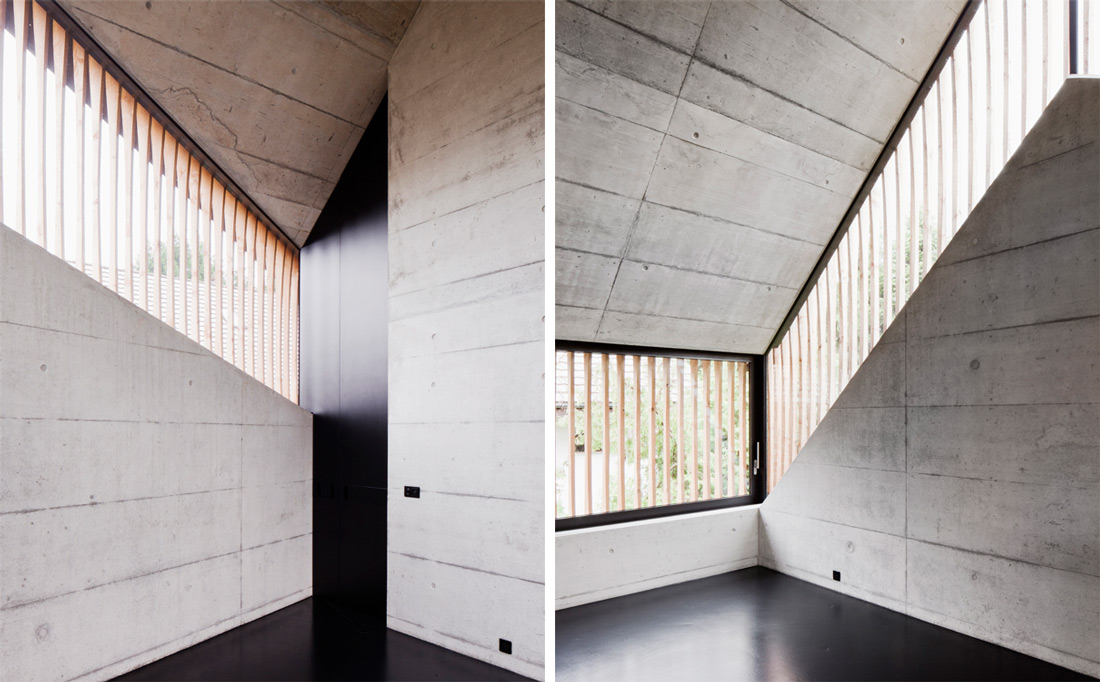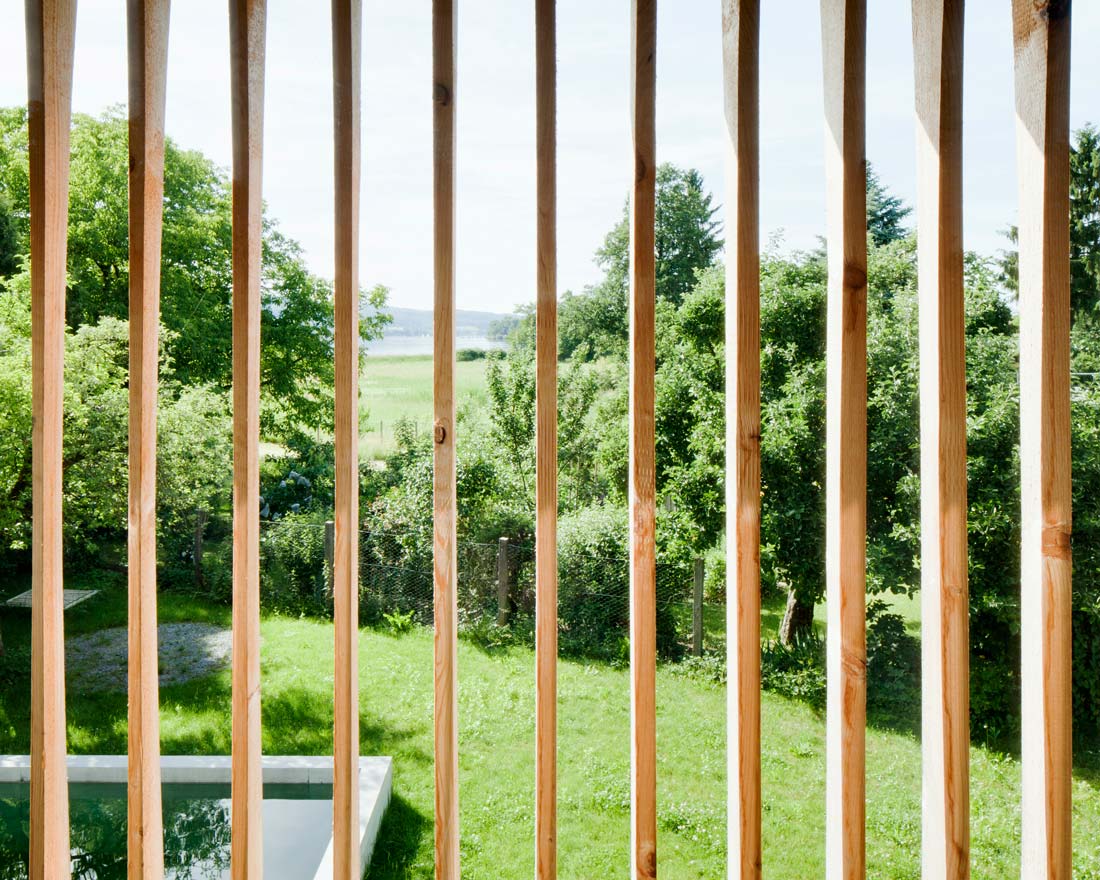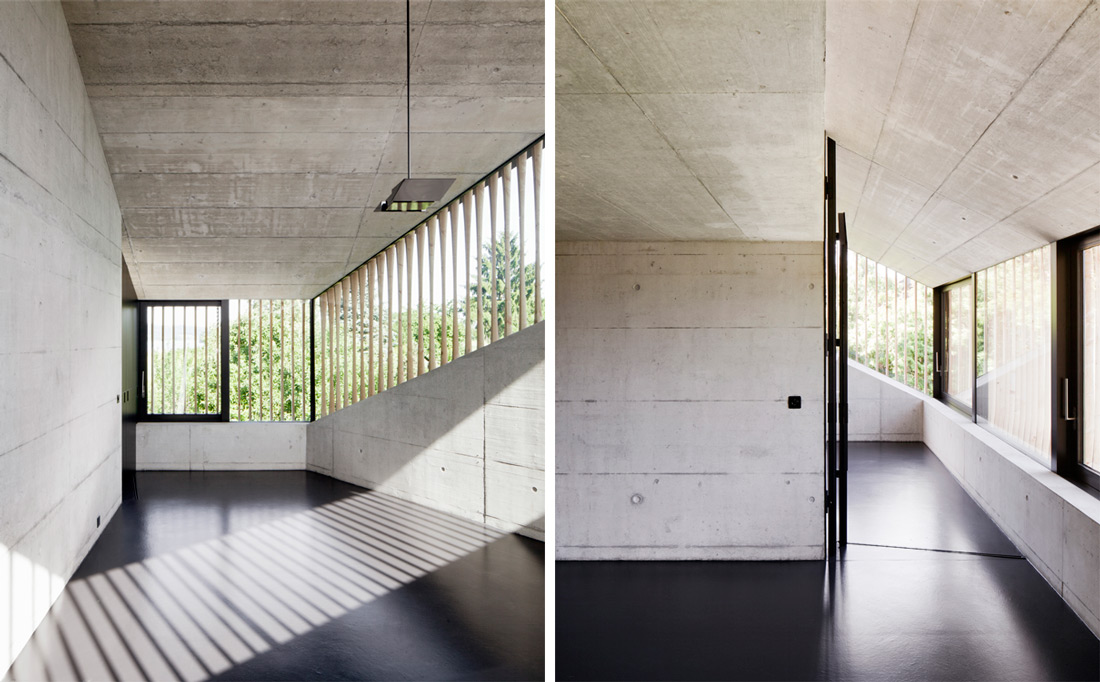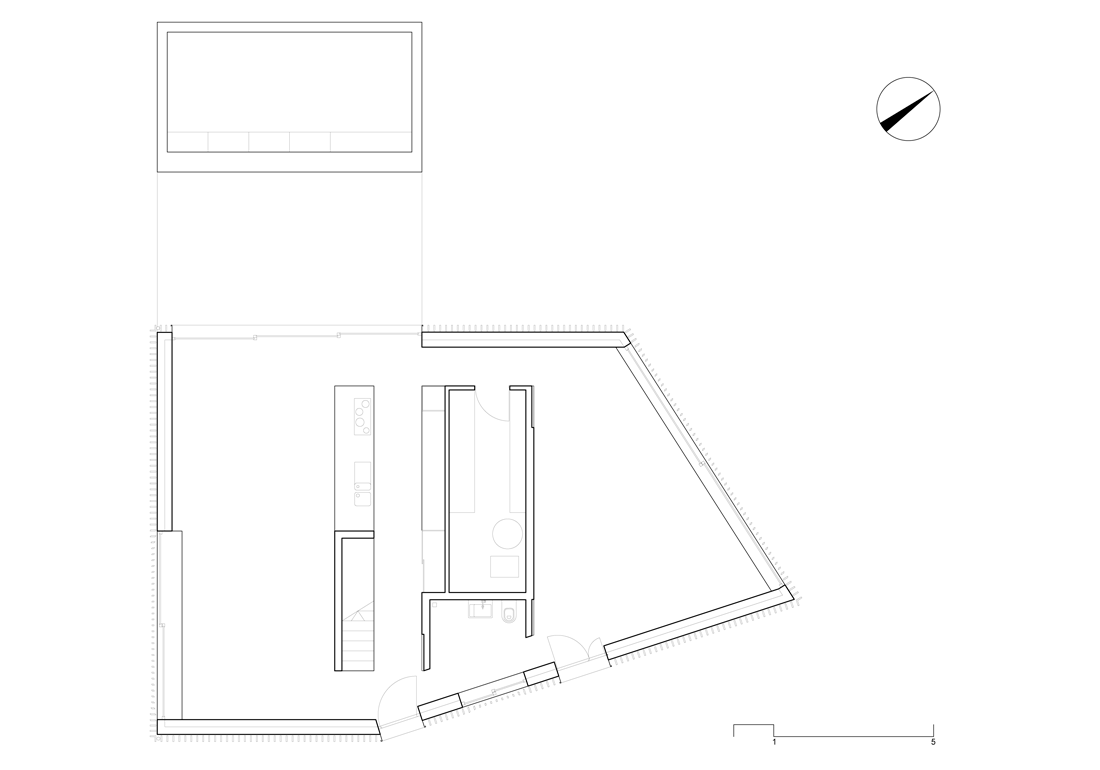This dwelling, which reinterprets the typology of the surrounding gable-roof houses, gains its marked design by adapting form to context parametrically.
The stipulations of two geometric operations were used to determine the ground plan shape of the house. One condition was to avoid blocking the neighbouring house’s view of the lake; the other was to permit access and parking behind the house. Like a tent, an overhanging pitched roof covers the high rooms on the upper storey.
The window strip, which runs along the edge of the roof, emphasises the horizontal structure. 315 vertical wooden slats, affixed to the surface of the wall, completely envelope the facades.
By milling the edges, the cross sections of the slats were modulated in correspondence with the window strip so that requirements of sight and sun protection were fulfilled, and various, flowing levels of transparency could be set.





